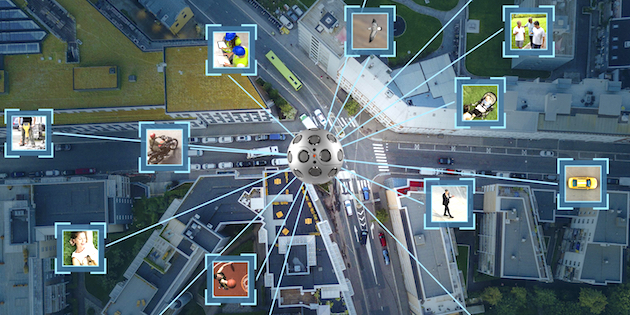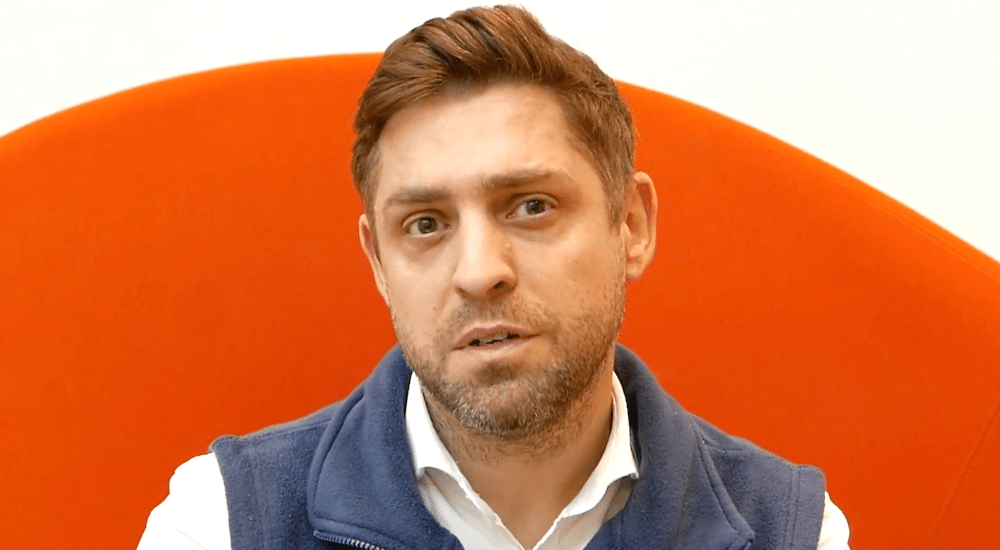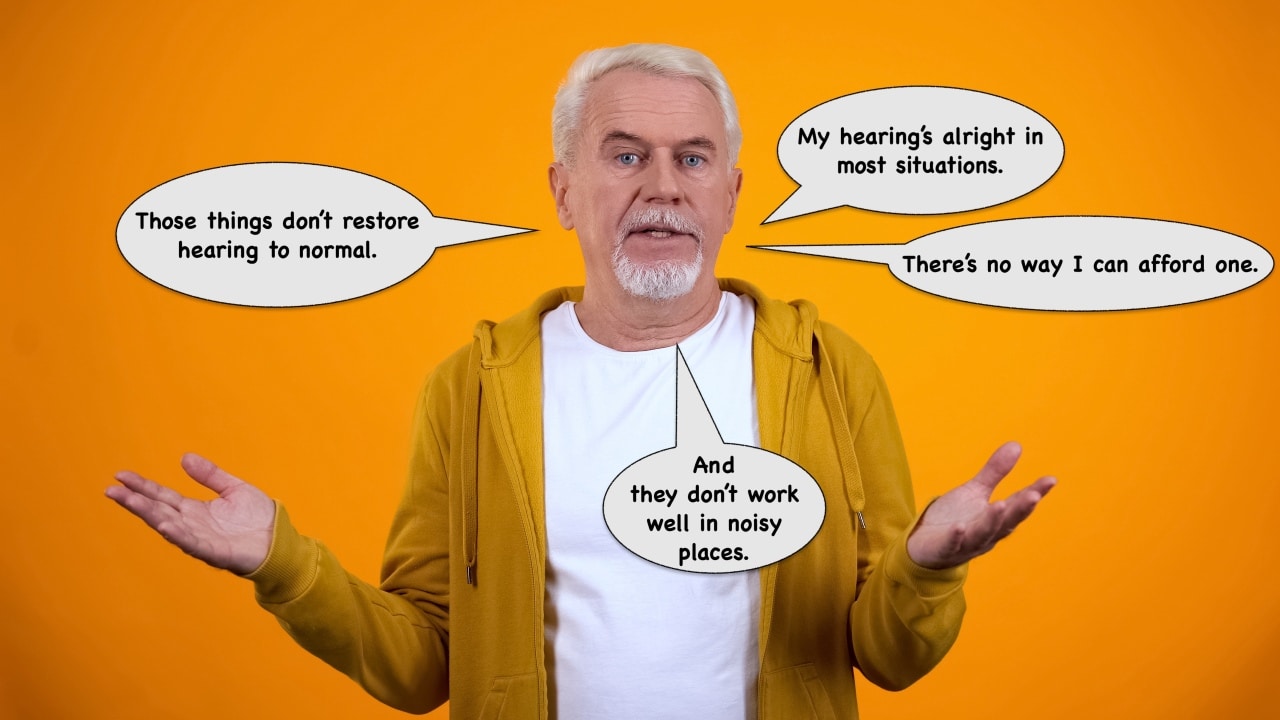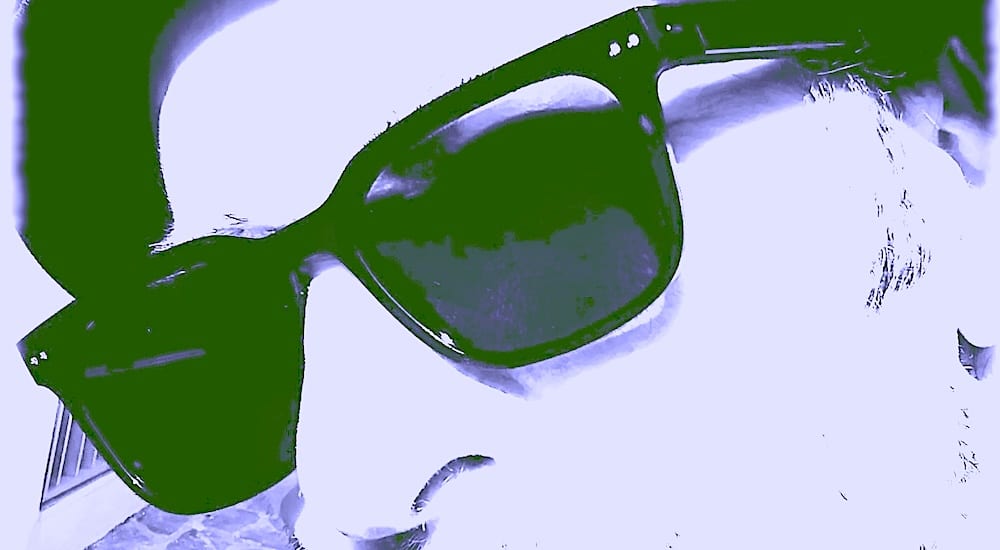Talking and hearing A DEEPER MORE
hearing aids
Ole Asboe Jørgensen, President of Oticon Brand, Global, told Audio Infos Editor Peter Wix that increasing the percentage of speech cues to the brain through its Opn hearing aids was not enough for the Danish manufacturer. What More does it want by bringing deep neural networks into the frame?

The stir-craziness of pandemic conditions can bring us strange flights of fancy, inner voyages, visual and acoustic mirages.
There I am reacquainting myself with Oticon’s agile-minded brand boss and, for the purposes of getting into and behind More, I ask him to join my family and I as we visit Rome’s Trevi Fountain. It’s busy enough. Fellini may be there, adding to the ambience as he noisily rehearses knee-deep Mastroianni and Anita Ekberg. Tourists mingle and natter. And my deeper neural stuff is informed by the many times I’ve seen the film, so the scene is well learnt and set.
Ole Asboe is quick and happy to travel there with me, chuckling as if he expected this as my condition for his explaining how the sonic world I might hear through the Oticon More hearing aid is indeed the real thing, not a chip-driven artifice, just my auditory reality, primed but not replaced by countless learned sonic situations, and balanced to my hearing needs with traditional acoustic science tools such as compression.
“So, assure me Ole,” I beseech, “this gushing water and all the other sounds I’m hearing are not just recorded references from this wholly potent hearing aid dredging its vast memory of sounds? How does it match the reality of what I’m sensing with all that data it carries?”
˝No, you hear the real Trevi Fountain,˝ Ole confirms, pointing out that “the sounds from the Trevi fountain and all the surroundings go through this deep neural network that analyses what the sounds are in that area, and then it creates a proportionality so to speak.˝
˝The deep neural network doesn’t know that this is running water but it recognises the distinctness of that sound and it will pass it through to you. It is a sound in your environment that is recognised by the deep neural network, which says ‘OK I understand this situation here, it’s like this, so I should present it like it is’, and that has been verified before because it was trained to get to this level of perfection.˝

The deeper More, a merrier more
This brings me a clearer picture: this More is all about deeper. This is not the more Oliver Twist dared to ask for, a hunger for any sound at all, greeted by the Dickensian beadle’s bellow of take it or leave it. And it is not a Utopia of the Thomas More kind, no state of things that should be but ain’t. And neither, if all is to be believed (indulge me) is it the smoothed-up speech of the Moore you got in your 007 when you still wanted the rugged stereophysics of Sean Connery.
No. This Oticon More, as Ole Asboe explains, is about returning real detail, the ambient features that people with hearing loss have had to trade for so long for speech clarity in their aids. A return, after decades of eliminating sounds to bring speech to the fore, to what moves the air waves around the speaker.
˝And it is a kind of sound picture,˝ he confirms. ˝It’s just that the deep neural network creates a sound picture that is in proportion so that you can cope with it.˝
˝The sounds from the Trevi Fountain and all the surroundings go through this deep neural network that analyses what the sounds are in that area, and then it creates a proportionality, so to speak. If your wife was speaking just in front of you, that would be prominent of course, but you would be able to hear the splashing sound, coins thrown in at some point, a bird may be singing,…˝
“And I’m not bullshitting here,” he urges. ˝We have already so many feedbacks from users that report exactly this, that the detail around them is being captured, detail they haven’t heard for years.˝
˝So, when, at the next stage, the sounds are amplified we try to make sure that the so-called compression system doesn’t destroy that sound picture. So we enhance this picture, this small megacube of the sound environment, and enhance it up so that it stays in proportion. That means you are able to have a conversation in front of the Trevi Fountain and still get the details around you without it being intrusive or annoying or meaning that you couldn’t understand what was being said.˝
Technology powers the complex process that leads to the product
Always something of mystery to those who receive a product and have to sell and fit it to a patient, is how the product is arrived at. Does a company demand technology from its scientists, or is technology the driving force that marketers must react to and know how to package.
˝It’s a strange process,˝ admits Oticon’s brand president, Ole Asboe Jørgensen. ˝I have never worked directly with the pharma industry but there are some similarities. We have a good physiological understanding, and we are trying to further our understanding of how the hearing system and the brain processes sound, and at the same time, based on these understandings, also try to advance technology.˝
˝Sometimes you just can’t make these two processes run totally in parallel. Sometimes the technology runs ahead and we need more time to go deeper into things, as with the brain. That is also because some of the things we now have proof of from the brain research was something we had circumstantial evidence for prior to their being published by other universities around the world.˝
˝So it runs a bit in parallel and the last part of it is the marketing. In all honesty, building the link between research, technology, and then a conceptual story that is easier to grasp is a long process. It actually runs for about two years as the technology becomes refined and the link between that and the research becomes clearer and clearer to us. So you can see that it is actually three tracks running parallel for a long time.˝
![]()
Kill all noise? Don’t kill the the thing you love!
Through its researchers at the Eriksholm Centre in Snekkersten, Denmark, Demant has long been developing technology to try to make hearing aids mimic the way the brain processes sound. They found, claims Ole Asboe, the way forward to a hearing aid that would keep speech clarity but allow access to more sounds, thus weakening the influence of the”signal-to-noise“shibboleth by which speech is the signal, and noise everything else. The secret comes from the the sphere of machine learning, specifically in the deep learning architectures known as deep learning networks.
˝We’ve recorded hundreds of hours of sounds in sound environments with noisy situations, different environments, and then we started training this deep neural network. In the first instance, the engineer would sit there and say that the network would come out with some results on what it heard, so to speak, and then it would get it wrong, and then it would be corrected. And at a certain point in time it starts learning by itself so you can say it starts to work like a human brain experiencing sound.˝
What this meant in the development of Oticon More, says the brand President, is the recovery of those sounds that had been sacrificed in past hearing aid technology for the benefit of being able to deliver clear speech to the user. When hearing instruments were equipped with sensors, these could analyse sounds and separate speech from other sounds in the signal, considering the rest as noise.
˝Some manufacturers have been aggressive and said ‘we kill all noise’, so only the speech is there, with the implication that you get the speech but feel you lose out on something. Then other manufacturers have said ‘well, we need to preserve some of the other sounds’, then the speech does not become as clear as it could be if you moved everything away. So it has always been a trade-off,” explains Ole Asboe.
Along the way, in 2016, Oticon proclaimed groundbreaking status for its launch of the Opn platform, which held the focus on a relevant speaker but opened up the sound to speech around you. More, for Ole Asboe, is not a development of that technology, but “something completely different, and that at this point in time I would consider bigger than what we did with Opn.˝
The game is ”new is always better“
So, our fantastic voyage to Rome has relaxed us, and we can settle back, a few thousand kilometres apart, and look at how the more complex technological stories are weaved into a knit for the customer. We’re laughing now at the idea that the next Demant hearing platform might be named Oticon Less, and how it seems that whatever product a hearing health manufacturer brings out, it is announced as the best. The one before was also then the best, so from the marketing perspective, the game seems to be that new is always best.
˝Yes that is the game,˝ Ole Asboe has to admit. ˝And I’ll be totally honest about that, I always have been. If you are a company that strives to do better, that is what always happens, unless you mess it up somehow. If there is any innovation to be made or any new ground to cover, then that’s a natural journey; it will be better. Of course, we are trying to tell the best possible story, and I can also tell you that this industry is somewhat overcommunicated and also sometimes overpromised on things that will be possible,˝ he continues.

But isn’t this, in common with all stories in tech driven by artificial intelligence, a difficult story to get across?
˝It is!˝ agrees Ole. ˝Let me tell you why. When you come out of a lab, engineers tend to look at spectrograms, curves on a chart, and nobody like me, who comes from a business education, understands that. How do you take it from there and into something that is meaningful to us to explain what is going on?˝
“I’m not naive. I don’t think the world will be able to be occupied with hearing care for very long, so it has to be simple and easy to understand, but there is something to understand for everybody. So the two-liner of everything I’ve told you is that we know now that the brain needs access to all sounds and Oticon More is the first hearing aid in the world that is capable of doing that and giving you even better speech understanding at the same time.“
So, now there is More, and it could be the story for a long while. But is More the end?
˝I’m sure it is something that will catch on in the industry,” laughs Ole Asboe. ˝It’s a technology that you cannot disregard; you need it. But we also know that the industry is terribly technology-driven; I have a hard time finding other industries that have such a craving for newness, so I think you will see that More will not change that either; we will have to move on and do better and better, otherwise I think we’ll lose relevance.˝
Source: Audio Infos issue 141 March-April 2021
 Sign in
Sign in

